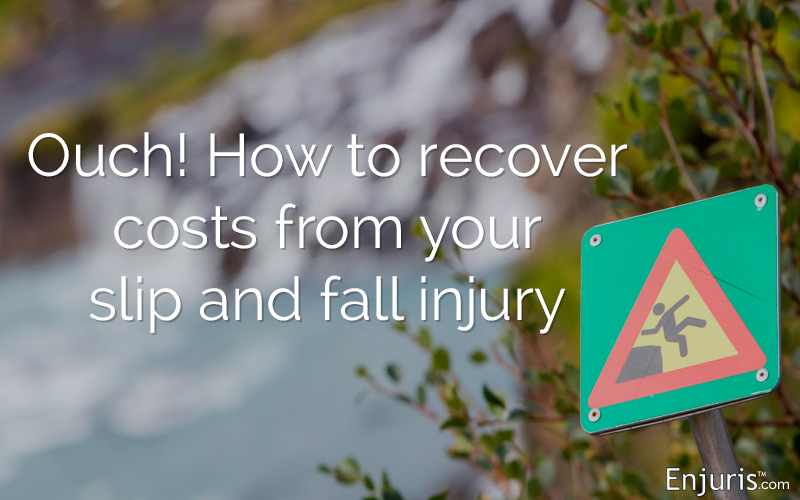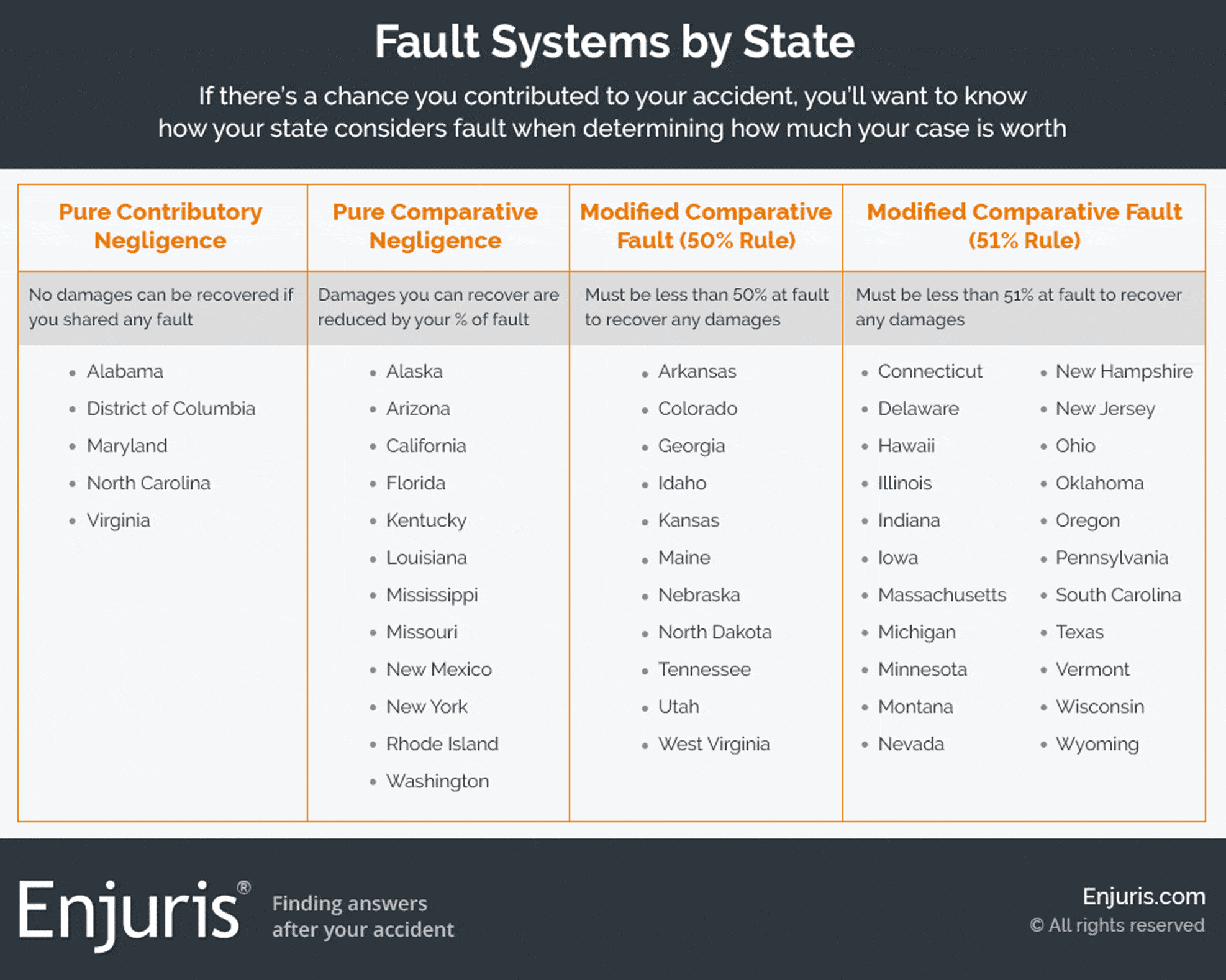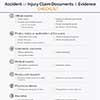
What critical questions to ask when establishing fault from a slip and fall accident
Everyone falls sooner or later. Many slip, trip and falls result in minor injuries or none at all. But an estimated one in five falls results in a serious injury like a broken bone or head injury, and falls are especially dangerous to older adults. In 2015, medical costs totaled more than $50 billion for treatment of falls in the US.
If you’ve been injured from a fall, you might be entitled to compensation for your medical treatment and other expenses. If you fell at work, you’re likely covered by workers’ compensation regardless of fault.
If you fell outside your own property or your workplace, you’ll need to establish premises liability in order to file a lawsuit for a slip and fall injury.
Theory of liability for a slip and fall
A property owner is responsible for maintaining safe conditions. However, each of us also has a responsibility to watch where we’re going and exercise reasonable caution.
There are three ways to determine liability for a slip and fall:
- The owner or an employee of the property caused the condition that led to a fall. (For instance, if you slipped because of a spill, worn or torn carpet, or because of some other item left on the floor or underfoot, the owner might be liable for your injuries.)
- The owner or employee knew the surface was dangerous but did nothing to fix it or notify users in a reasonable and timely manner.
- The owner or an employee should have known the surface was dangerous because a reasonable person would have known about and repaired it.
“Reasonable” hinges on common sense.
Sounds simple, right? Not always.
If your case goes to court, it’ll be up to a judge and jury to determine whether a person was reasonable in maintaining the property, but also whether you were reasonable in not knowing it was dangerous.
Slip and fall questions to determine liability
If you’re wondering if you can prove liability for a slip and fall, look at these factors: negligence, liability, and contributory fault.
Negligence
Negligence is when a person disregards the safety of others. The key question is if a reasonable person would have identified a condition as hazardous and had opportunity to improve it. For instance, if the entrance to a store had a pothole, was covered by a leaky roof, or had a cracked floor, should a reasonable person have realized these situations were dangerous? And had they been there long enough for an employee to either fix or notify customers that they exist?
The burden is on the injured person (plaintiff) to prove that the property owner (defendant) was negligent in maintaining the property. In other words, the injured person needs to show that the owner could have prevented the accident but didn’t.
Liability
Any person or entity with legal responsibility for a property is liable for what happens there. Sometimes, their insurance policy will relieve them of liability, so a lawsuit would be against the insurance company and not the actual property owner. To file a slip and fall lawsuit, you must properly identify who’s liable for the property.
This is important because some accidents are just... accidents. In order for someone to be liable, there has to be a person whose negligence caused the injury.
Plaintiff’s contributory fault
Most states have a comparative negligence standard. Each party is determined to have a percentage of negligence for an accident for the purpose of determining a damage award. In some states, there’s a contributory negligence standard, which means if the plaintiff contributed to the accident in any way, there would be no recovery of damages. Comparative negligence mitigates this so even someone who’s not the “perfect” plaintiff can recover damages from a slip and fall.

Fault Systems by State
View Full Size Get the Code Use this graphic on your site
Use this infographic on your site
We encourage people to use our infographics, with proper attribution. Just copy and paste the code below to use this infographic on your site. If you need help, let us know!
<a href="https://www.enjuris.com/personal-injury-law/shared-fault-rules/" target="blank"><img src="https://www.enjuris.com/wp-content/uploads/2022/10/fault-systems-by-state-2022.gif" alt="Fault Systems by State" title="Fault Systems by State" style="width: 100%; max-width: 987px; display: block; margin: 15px auto;" /></a>
Facts: Six-year-old Isaiah Rider was attending an after-school childcare program run by the YMCA. One afternoon when there was melting snow and ice on the playground, the group of children came indoors to the cafeteria and crossed its smooth tile floor. There was no floor mat present for the children to dry their feet. The children went across the cafeteria to wash their hands, where there was no floor mat by the sink either to protect against dripping water making the floor slippery. As Isaiah left the sink area, he slipped on a puddle on the tile floor and broke his left tibia (leg bone).
The lower court ruled that Rider was 90% at fault because he failed to look carefully where he was walking, and so although he had been awarded damages of $5.9 million, the award would be reduced by 90% to $590,000.
On appeal, the court found that the YMCA was 100% at fault because “the dangerous condition was not alleged to have been a passive condition inherent to the premises but was, instead, a condition immediately caused by the actions of YMCA staff directing the children to play outside in wet conditions, to wash their hands at a large communal sink, and then to cross a smooth tile floor — all without providing any type of mat on which the children could wipe their feet and without otherwise preventing the dangerous condition from arising.”
Conclusion: Isaiah Rider recovered damages in the amount of $5.9 million.
How else might contributory negligence be a factor? You probably see people walking while texting or looking at their phones all the time — that could be a significant element for the defense if it can show that an injured person wasn’t concentrating on walking when they fell.
Slip and fall questions for residential or government property
A residential property has a slightly different standard than commercial property. These four conditions must be met:
- The landlord or homeowner had control over the condition that caused the injury
- It would not be unreasonably expensive or difficult to repair the condition
- It was foreseeable that the condition would cause a serious injury
- The owner or landlord’s failure to reasonably prevent the accident was the cause of the injury
There can be immunity provisions for government property that shield it from liability. Those depend on the specific local, state, or federal government that controls it.
What to do if you have experienced a slip and fall accident
First things first. If you’re injured, get medical treatment.
Your next move is to report the fall to the property owner — whether it’s a friend, business owner, or public property (like a sidewalk or street) — but don’t share details. Also, never post information about the accident on social media or speak with the property owner’s insurance company before consulting your own lawyer.
Next, document everything about the incident, including if there were witnesses. If you’re out in public, ask anyone who witnessed the fall to provide their name and contact information because they could be crucial to your case.
 Documents & Evidence Checklist
Documents & Evidence Checklist
Checklist of 30 items to help you prepare for making a personal injury or accident claim
Download in PDF format![]()
Photos are also important. Take pictures of the condition of the stairs, sidewalk, or ground where you fell and try to show your perspective at the time of the accident and also from other vantage points. If you’re not in a physical condition to take photos at the time of the fall, see if a witness or family member can help. The conditions that caused your fall might not be there days, hours, or even minutes later.
Questions to ask about a slip and fall injury
As you determine next steps in filing a slip and fall lawsuit, ask yourself these questions:
- Can you prove liability for the slip and fall accident? The owner must have been aware of the hazard but took no action, should have been aware of the hazard because of obvious risk, or created the hazardous situation.
- Could you be at fault, wholly or partially, for your injury?Did you heed all posted warnings? Were you moving carefully and not ignoring your footing? Did you exercise reasonable care? Were you trespassing or in a restricted area?
If you believe that your slip and fall injury meets these conditions, or if you want to ask questions and get additional clarification, you’ll want to consult with a premises liability lawyer who can advise as to whether they think you have a case, and what process is involved. You can select a lawyer the same way you choose a doctor: find someone who is knowledgeable, experienced, and with whom you feel comfortable.
The Enjuris Personal Injury Law Firm Directory is a great resource for finding a personal injury lawyer in your state who’ll handle your case.
See our guide Choosing a personal injury attorney.
